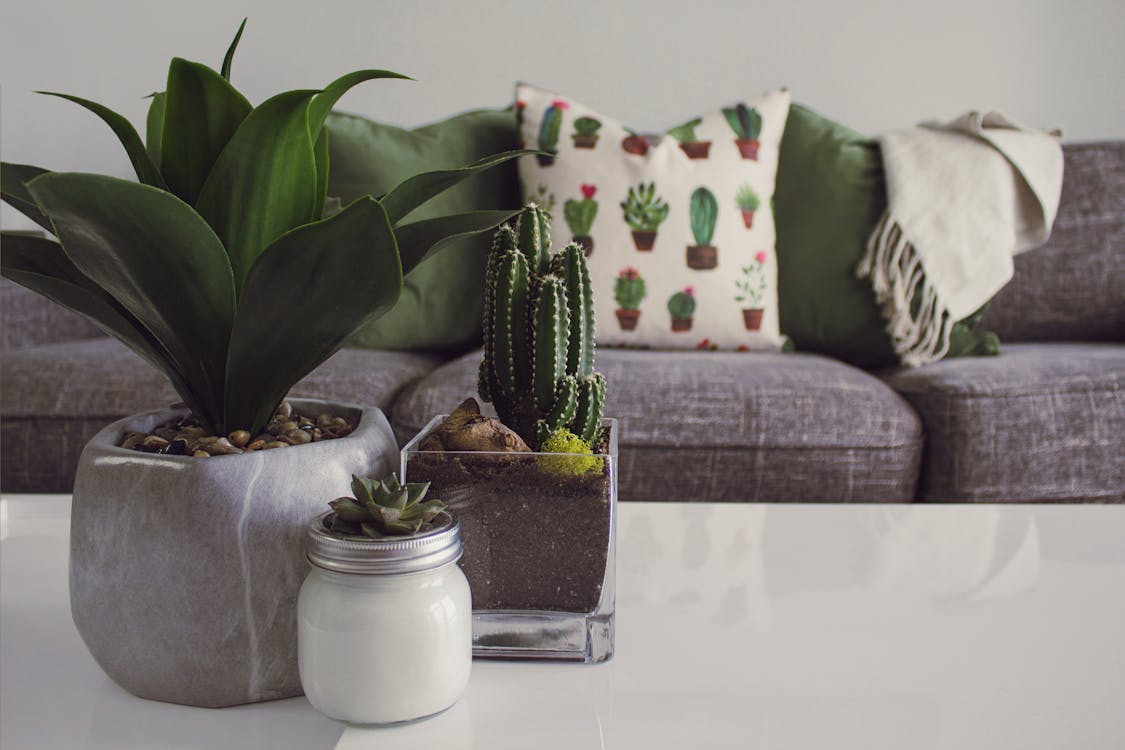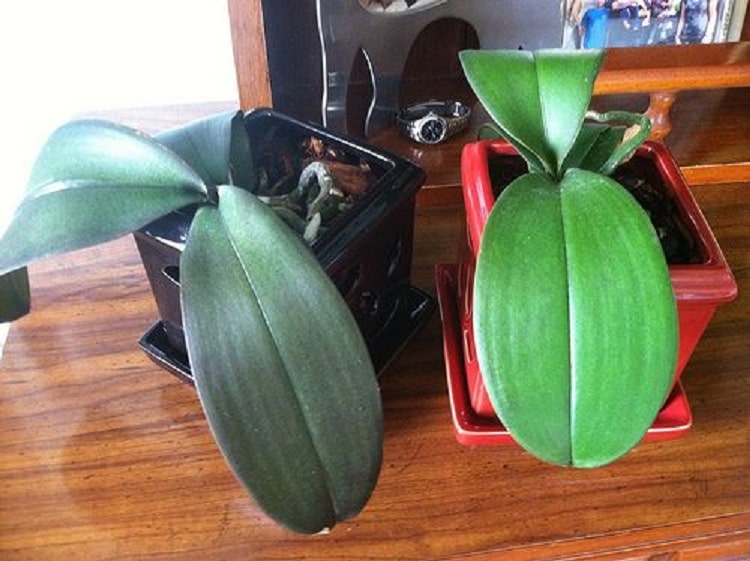Want to learn about the best plants for oxygen in bedroom? Are you looking to revive the air quality in your bedroom and enhance your overall well-being?
Look no further! In this article, we’ll present a list of the best indoor plants that beautify your space and release plenty of oxygen for a refreshing environment.
Transform your bedroom into a calming sanctuary with various green companions like the peace lily and snake plant. Discover the best bedroom plants for oxygen!
Benefits of Indoor Plants in the Bedroom
Having indoor plants in your bedroom has several benefits that can greatly enhance your overall well-being. Let’s explore some of the key advantages of incorporating plants into your bedroom decor.
Improved air quality
Indoor plants are renowned for purifying the air by removing harmful toxins and pollutants. In the bedroom, where you spend a significant amount of time, having plants can significantly improve the air quality, making it cleaner and fresher. Plants absorb carbon dioxide and release oxygen through a process called photosynthesis, which can help increase the oxygen levels in your bedroom.
Reduced stress and anxiety
Research has shown that being around nature, including indoor plants, can calm the mind and reduce stress and anxiety. Plants in your bedroom can create a soothing and peaceful environment, helping you unwind after a long day. The visual appeal of plants and the sense of nurturing they provide can also promote a sense of tranquillity and relaxation.
Better sleep quality
Certain indoor plants can contribute to better sleep quality by enhancing the ambiance of your bedroom and promoting a restful atmosphere. Some plants, such as lavender and jasmine, have natural sedative properties and can help induce sleep. Additionally, plants release moisture through a process called transpiration, which can improve the humidity levels in your bedroom and create a more comfortable sleeping environment.
Factors to Consider for Indoor Plants in the Bedroom
Before you rush out to buy indoor plants for your bedroom, there are a few factors that you should consider to ensure their successful growth and your own well-being. Let’s take a look at these important factors.
Light requirements
Different plants have varying light requirements, and it’s important to assess the lighting conditions in your bedroom before selecting the right plants. Some plants thrive in bright, indirect light, while others tolerate low-light conditions. Assess the amount of natural light your bedroom receives and choose plants accordingly.
Temperature and humidity levels
Plants have specific temperature and humidity preferences, and it’s crucial to choose plants that can thrive in the conditions of your bedroom. While some plants can tolerate fluctuations, others may require more stable temperatures and humidity. Consider the climate of your bedroom and choose plants that can adapt well to those conditions.
Toxicity
It’s essential to be mindful of the toxicity of certain plants, especially if you have pets or young children in your household. Some indoor plants may be toxic if ingested, and choosing plants that are safe for your bedroom environment is important. Do thorough research or consult with a knowledgeable plant expert to ensure the safety of your loved ones.
Maintenance
Consider your level of commitment when it comes to plant care. Some plants require more maintenance, such as frequent watering and pruning, while others are more low maintenance. Assess your availability and dedication to plant care and choose plants that align with your lifestyle. Low-maintenance plants can be a great option if you have a busy schedule or are new to plant care.

Top Best Plants for Oxygen in Bedroom
Adaptogenic plants are known for their ability to adapt and thrive in various environments. These plants can effectively increase the oxygen levels in your bedroom, creating a healthier and more oxygen-rich atmosphere. Here are some of the top adaptogenic plants for oxygen:
Snake Plant
Snake plants, also known as Sansevieria, rank among the most popular indoor plants. Their ability to produce oxygen at night makes them an ideal choice for the bedroom. Additionally, snake plants boast long, upright leaves variegated with shades of green, adding to their visual appeal.
Aloe Vera
Aloe vera is great for its medicinal properties and releases oxygen at night, making it a suitable plant for the bedroom. TH vera plants have succulent leaves that contain a gel-like substance with numerous health benefits. They require minimal care and can thrive in various lighting conditions.
Spider Plant
Spider plants, scientifically known as Chlorophytum comosum, are excellent air purifiers and oxygen producers. They have long, arching leaves with small plantlets that hang from the main plant. Spider plants are easy to care for and can thrive in various light conditions, making them a versatile choice for the bedroom.
Peace Lily
Best plants for oxygen in bedroom are incomplete without Peace lilies. Their attractive white flowers not only add beauty to your bedroom but also help improve oxygen levels; these plants are known for their ability to filter out toxins from the air, making them an excellent choice for indoor environments. They prefer moderate to low light conditions and require consistent watering.
English Ivy
English ivy is a trailing vine that can adapt well to various indoor conditions. It is highly effective at removing airborne toxins and increasing oxygen levels in the bedroom. English ivy thrives in bright, indirect light and prefers slightly cooler temperatures. It’s important to note that English ivy can be toxic to pets, so exercise caution if you have furry friends at home.
Golden Pothos
Golden pothos, also known as Devil’s Ivy, is a popular trailing plant that is easy to care for and can tolerate a range of lighting conditions; it’s known for its air-purifying properties and can help increase oxygen levels in your bedroom; they have heart-shaped leaves with variegated patterns, adding a touch of greenery to your space.
Here is an interesting blog to check about Best Care Tips for Houseplants
Best Plants for Air Purification

If you want to improve your bedroom’s air quality, incorporating air-purifying plants is a great idea. These plants are highly effective at removing toxins and pollutants from the air, ensuring that you breathe in cleaner and fresher air. Here are some of the best plants for air purification in the bedroom:
Areca Palm
The Areca palm, also known as Dypsis lutescens, is a popular choice for indoor environments due to its excellent air-purifying capabilities. Moreover, it is highly effective at removing formaldehyde, xylene, and toluene from the air, making it a perfect plant for the bedroom. Areca palms require bright, indirect light and regular watering to thrive.
Boston Fern
Another best plants for oxygen in bedroom are the Boston ferns, or Nephrolepis exaltata, are elegant and lush plants that can significantly improve the air quality in your bedroom; they are known for their ability to remove formaldehyde, xylene, and other pollutants from the air. This plant requires bright, indirect light and high humidity levels to thrive, making them a great choice for bathrooms as well.
Rubber Plant
Rubber plants, scientifically known as Ficus elastica, are not only visually appealing but also highly effective at purifying the air. However, they are particularly good at removing formaldehyde from the environment, making them a top choice for air purification in the bedroom. Rubber plants prefer bright, indirect light and require regular watering.
Bamboo Palm
Bamboo palms, or Chamaedorea seifrizii, are compact and versatile plants that are excellent at removing formaldehyde, benzene, and other harmful toxins from the air. Their lush and feathery leaves add an aesthetic appeal to your bedroom while ensuring cleaner air. Bamboo palms thrive in bright, indirect light and require moderate watering.
Weeping Fig
Weeping figs, also known as Ficus benjamina, are popular indoor plants that can effectively remove formaldehyde, xylene, and other pollutants from the air. They have graceful, arching branches with glossy leaves and can add a touch of elegance to your bedroom. Weeping figs require bright, indirect light and regular watering to flourish.

Plants for Improved Sleep Quality
Getting a good night’s sleep is essential for overall well-being, and certain indoor plants can contribute to a more restful sleep. These plants have calming properties and can create a tranquil environment in your bedroom, promoting better sleep quality. Here are some plants that are known to improve sleep quality:
Lavender
Lavender is renowned for its soothing scent, which promotes relaxation and better sleep. Research has shown that the scent of lavender can reduce anxiety and help induce sleep. Place a pot of lavender in your bedroom or use lavender essential oil to enjoy its sleep-enhancing benefits.
Jasmine
Jasmine is another plant known for its sleep-inducing properties. The sweet and appealing fragrance of jasmine has a calming effect on the mind, reducing anxiety and promoting deeper sleep. Remember to keep a jasmine plant near your bed or use jasmine essential oil to create a peaceful sleep environment.
Valerian
Valerian is a herb known for its natural sedative properties. It has been used for centuries to promote relaxation and improve sleep quality. Valerian plants can be grown indoors, and the smell of their flowers can help create a calm and tranquil atmosphere in your bedroom.
English Ivy
English ivy, apart from increasing oxygen levels, also improves sleep quality. The plant releases a compound called hedera helix, which research has found to reduce airborne mold and improve respiratory symptoms, leading to a better night’s sleep.
Gardenia
Gardenias are beautiful plants that produce fragrant white flowers. The sweet smell of gardenias can create a calming effect, helping to reduce anxiety and promote sleep. Place a gardenia plant in your bedroom and enjoy its delightful scent as you drift off into a peaceful slumber.
Plants for Stress Reduction
If you’re looking for natural ways to reduce stress in your bedroom, incorporating certain indoor plants can be highly beneficial. These plants have a calming effect on the mind and can create a serene environment that promotes relaxation. Here are some plants that are known to reduce stress:
Spider Plant
Spider plants are one of the easiest plants to care for, and they also have stress-reducing qualities. Their long, arching leaves create a visually pleasing display, and their ability to remove toxins from the air can contribute to a healthier living environment, reducing stress levels.
Snake Plant
Snake plants, with their upright leaves and striking appearance, are not only great for oxygen production but also play a role in stress reduction. The green foliage can create a soothing atmosphere and the low-maintenance nature of snake plants makes them an ideal choice for those looking for stress-free plant care.
Aloe Vera
Aloe vera plants are not just known for their healing properties but also for their ability to reduce stress. The gel-like substance found in aloe vera leaves can be applied topically to promote relaxation and relieve stress-related symptoms. Having an aloe vera plant in your bedroom can provide a source of natural stress relief.
Peace Lily
Peace lilies, with their elegant white flowers, are known for their air-purifying qualities, which can contribute to a healthier living environment. In addition to that, peace lilies have a calming effect on the mind and can help reduce stress levels. Their low-maintenance nature and aesthetic appeal make them a popular choice for bedrooms.
Bamboo Palm
Bamboo palms are not only effective at purifying the air but also have stress-reducing properties. The lush green foliage and graceful appearance of bamboo palms can create a serene and tranquil atmosphere, helping to alleviate stress. Incorporate a bamboo palm into your bedroom decor and enjoy its calming effects.

Plants for Improved Humidity Levels
Maintaining optimal humidity levels in your bedroom is crucial for your overall well-being, and certain indoor plants can assist in achieving this balance. These plants release moisture into the air through a process called transpiration, resulting in increased humidity. Here are some plants that can improve humidity levels in your bedroom:
Boston Fern
Boston ferns are not only excellent air purifiers but also effective humidifiers. These lush plants release moisture into the air, helping to increase humidity levels in your bedroom. They thrive in high humidity environments and are an ideal choice for those seeking to improve humidity levels while adding greenery to their space.
Areca Palm
Areca palms are known for their air purifying properties, but they also contribute to increased humidity levels. These palms release moisture into the air, creating a more humid atmosphere in your bedroom. Their elegant appearance and ability to thrive in various lighting conditions make them a popular choice for bedrooms.
English Ivy
English ivy, apart from its air-purifying qualities, can help improve humidity levels in your bedroom. The plant releases moisture through its leaves, increasing the humidity in the surrounding environment. English ivy is versatile and can adapt to different lighting conditions, making it suitable for a wide range of bedrooms.
Rubber Plant
Rubber plants have large, glossy leaves that release moisture into the air through transpiration. This process helps increase humidity levels, making rubber plants an effective choice for improving humidity in your bedroom. Additionally, rubber plants are low-maintenance and can thrive in various lighting conditions, making them a popular choice for bedrooms.
Spider Plant
Spider plants are not only easy to care for and visually appealing, but they also release moisture into the air, improving humidity levels in your bedroom. Their arching leaves and spiderettes are unique and can add a touch of greenery to your space. Various lighting conditions suit spider plants well, making them a versatile choice for bedrooms.
Low Maintenance Plants for Bedrooms
If you’re new to plant care or simply have a busy lifestyle, low maintenance plants can be a great choice for your bedroom. These plants require minimal care and can still provide numerous benefits, such as air purification and improved aesthetics. Here are some low-maintenance plants for bedrooms:
Snake Plant
Snake plants are incredibly resilient and can thrive in low light conditions, making them an ideal choice for bedrooms with limited natural light. They have long, upright leaves that come in various patterns, adding visual interest to your bedroom decor. Snake plants require infrequent watering and can withstand periods of neglect.
Spider Plant
Spider plants are highly adaptable and can survive in a range of lighting conditions, from bright indirect light to low light. They have long, arching leaves with small plantlets that hang from the main plant, creating an attractive display. Spider plants are easy to care for and only require occasional watering and moderate indirect light.
Aloe Vera
Aloe vera plants thrive in a variety of lighting conditions and are known for their minimal care requirements. They have thick, succulent leaves that contain a gel-like substance with various medicinal properties. Aloe vera plants require infrequent watering and can tolerate periods of drought, making them suitable for low-maintenance bedrooms.
Peace Lily
Peace lilies are not only beautiful with their white flowers, but they are also low-maintenance plants that can thrive in low light conditions. They are highly effective at purifying the air and require minimal care. Peace lilies prefer moderate watering and can indicate when they need water by drooping their leaves.
Golden Pothos
Golden pothos, also known as Devil’s Ivy, is a trailing vine that can survive in a wide range of lighting conditions. It has heart-shaped leaves with variegated patterns, adding a touch of greenery to your bedroom. Golden pothos is a low-maintenance plant that only requires moderate watering and can tolerate periods of neglect.
Plants to Avoid in the Bedroom
While there are numerous indoor plants that can thrive in the bedroom, there are also some plants that are best avoided. These plants may release toxins or allergens that can negatively impact your sleep and overall well-being. Here are some plants to avoid in the bedroom:
Elephant Ear
Elephant ear plants, with their large and distinctive leaves, may release allergenic pollen and can cause respiratory issues in some individuals. These plants are best suited to outdoor environments and are not recommended for bedrooms, especially for those with respiratory conditions or allergies.
Scented Geranium
Scented geraniums are beautiful plants with fragrant leaves, but they can be overwhelming for some people, especially in enclosed spaces like bedrooms. The strong scent emitted by scented geraniums may cause irritation and disrupt sleep for those sensitive to smells. It’s best to place scented geraniums in well-ventilated areas outside of the bedroom.
Oleander
Oleander is a highly toxic plant that should never be kept in the bedroom, especially if you have children or pets. All parts of the oleander plant, including the leaves and flowers, contain toxins that can be dangerous if ingested or even come into contact with the skin.
Poinsettia
Poinsettias are popular during the holiday season, but they may not be the best choice for the bedroom. Contrary to popular belief, poinsettias are not highly toxic, but they can cause skin irritation or allergic reactions in some individuals. If you have sensitive skin or allergies, it’s best to avoid keeping poinsettias in the bedroom.
Dieffenbachia
Dieffenbachia is a popular indoor plant with large, variegated leaves. However, it is considered toxic if ingested and can cause severe burning and swelling of the mouth, making it unsuitable for households with children or pets. It’s best to keep this plants in areas away from the bedroom.
Placement and Care Tips for Indoor Plants in the Bedroom
Once you’ve selected the ideal indoor plants for your bedroom, it’s important to consider their placement and care to ensure their optimal growth and longevity. Here are some placement and care tips for indoor plants in the bedroom:
Choosing the right size and location
Consider the size of your plants and choose containers that allow for adequate root growth. Place taller plants towards the back of your bedroom or in the corners to add height and create a visually pleasing display. Smaller plants can be placed on shelves, windowsills, or bedside tables to add greenery to smaller spaces.
Proper watering and drainage
Avoid overwatering your plants, as this can lead to root rot and other issues. Ensure that your plant containers have proper drainage holes to allow excess water to escape. Water your plants when the top inch of soil feels dry, and adjust the frequency based on the needs of your specific plant.
Regular dusting and cleaning
Indoor plants can accumulate dust on their leaves, hindering their photosynthesis ability. Regularly dust your plants with a soft cloth or use a gentle water spray to clean their leaves. This improves their aesthetic appeal and allows them to absorb light more efficiently.
Monitoring for pests and diseases
Keep an eye out for signs of pests, such as spider mites or aphids, and take appropriate action if necessary. Inspect your plants regularly for any signs of yellowing leaves, brown spots, or wilting, which may indicate problems such as nutrient deficiencies or diseases. Address any issues promptly to ensure the health of your plants.
In conclusion, incorporating indoor plants into your bedroom can bring numerous benefits, from improved air quality to reduced stress and better sleep quality. By considering factors such as light requirements, temperature, humidity levels, and maintenance, you can select the perfect plants for your bedroom.
Top adaptogenic plants for oxygen, best plants for air purification, plants for improved sleep quality, plants for stress reduction, plants for improved humidity levels, low maintenance plants, and plants to avoid in the bedroom offer various options to suit different preferences and needs. With the right placement and care, your indoor plants can thrive and enhance the ambiance of your bedroom, creating a peaceful and refreshing sanctuary for rest and relaxation.



